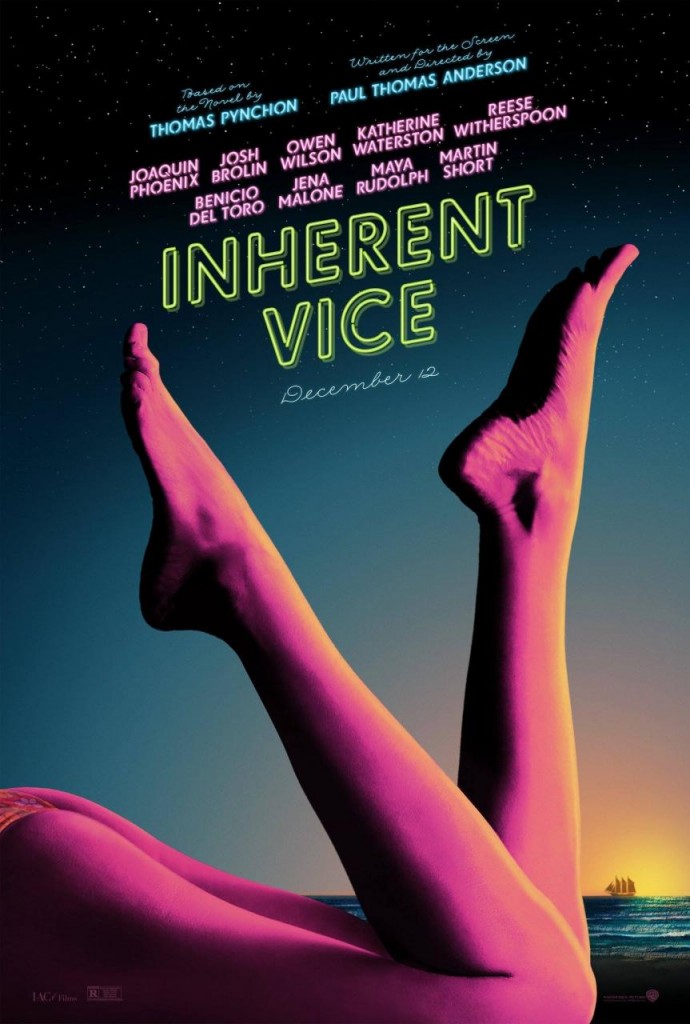Movie Breakdown: Inherent Vice (Noah)
People are doing traditional-style reviews all over the web, so we decided to try something different. In each “breakdown” we’ll take a look at what a film’s marketing led us to believe, how the movie actually played, and then what we learned from it all. Read on!
The Impression:
Alright, it’s Paul Thomas Anderson (top 5 directors of the last 40 years) adapting a bat-shit crazy book by one of the great, insane, American masters of writing. I would see this film if the entire thing consisted of a 35mm print of my dog’s anal glands getting squeezed.
The Reality:
I saw Inherent Vice for the second time last night and it showed me two things. One, Inherent Vice is an amazing film. An almost slapstick, stoner-noir, that flits around some of the very deepest and darkest themes of the 1970s with a sparkle in its eye and a tightly wrapped joint in the corner of its mouth. And two, this is a film that audiences are going to be able to watch over and over again and enjoy it, and hell, understand it, more and more each time. When I saw this film in December, I walked out dazed by the rat-tat-tat-tat plotline and the diverging narratives and the piles of characters and motives and cases PTA gleefully dumps on the film. It’s beautiful (because PTA has no concept of how to make a film ugly) and the acting, across the board, is outstanding (especially the warm-hearted stoner Doc Sportello played by Joaquin Phoenix, again making the argument that he is the best actor currently working) and I will say that PTA’s use of music in the film ascends just about any other he’s made. It’s a great film, but the first reaction I had when stepping out into the cold light of the movie theater was, “That film was weird.” It’s a tightly wound knot of story and PTA does not, for a moment, slow the avalanche of information to let you figure out what the hell is going on narratively, let alone with the big ideas of perception and identity that he subtly injects throughout the film. It’s as if the propulsion of the film (kicked into high gear by the opening Can track Vitamin C) reflects the theme PTA is trying to show – the 1970s were no different than the 80s, the 90s, or any time before it. It was just a bunch of people, doing what they could to get by – and by crafting a film that rockets along but is centered on the bumbling antics of a stoner-detective and his pals, you get the rush of a speedball, with all the confusion of a bong rip. And that’s just the first viewing. Upon a second screening all of the frivolities of plot and character development feel like the immediate family. The Golden Fang, Coy, the strange and wonderful locales the film drags you through – they make sense on second viewing and the audience is given the freedom to wrap their minds around the big and beautiful ideas PTA is shining a light on. I don’t know how to judge a film that needs to be seen twice (or just once by someone smarter than myself) to be completely understood, but I do understand the beauty of a film that with each viewing gets better and better and better.
The Lesson:
See it as many times as you can.


